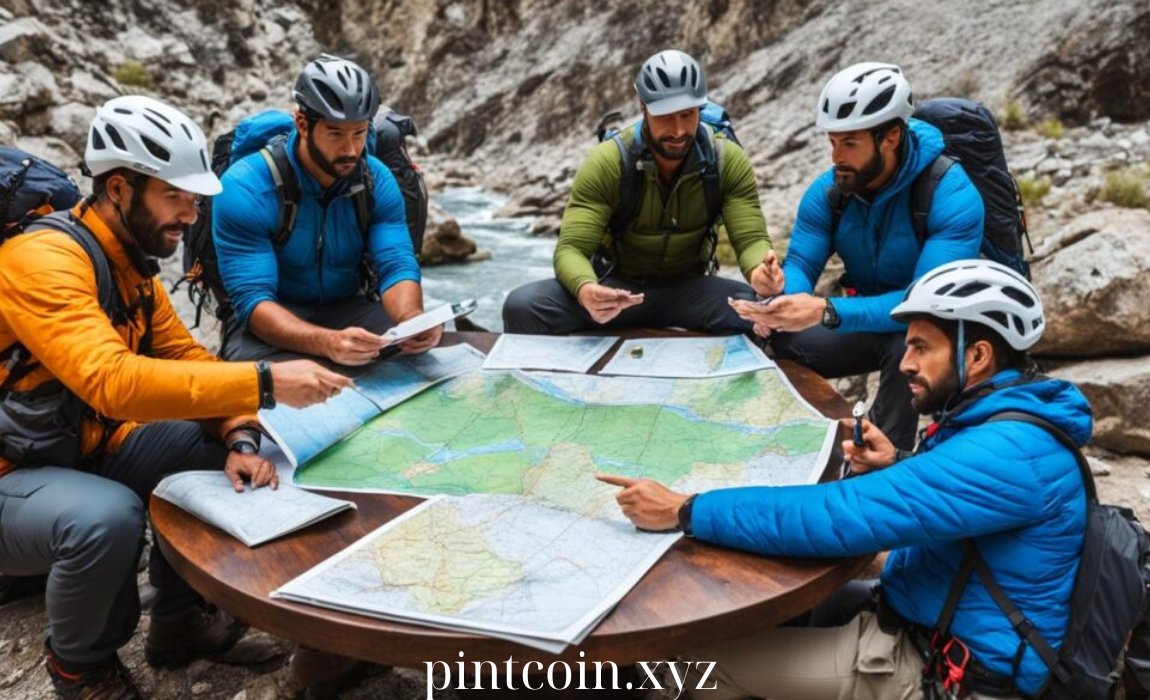News and Trends
Adventure Travel Coverage Trends: Ensuring Safety on Your Next Excursion
Adventure travel has become an increasingly popular way for thrill-seekers to explore the world, from trekking through remote mountain ranges to scuba diving in exotic locations. However, with the excitement of adventure travel comes heightened risks, which is why having the right adventure travel insurance is crucial for ensuring safety during these excursions. Insurance providers are evolving their offerings to meet the unique needs of adventure travelers, providing comprehensive coverage that accounts for medical emergencies, trip disruptions, and activity-related accidents. Here’s a look at the latest adventure travel coverage trends and how to protect yourself on your next adventure.
1. Coverage for High-Risk Activities
One of the biggest trends in adventure travel insurance is the expansion of coverage for high-risk activities. Traditional travel insurance policies often exclude or limit coverage for adventurous activities such as mountain climbing, scuba diving, or skydiving. However, many insurers now offer specialized plans that include these high-risk activities.
Key Features:
- Extreme Sports and Activities: Policies now cover a wide range of high-adrenaline activities, including bungee jumping, paragliding, white-water rafting, and more.
- Adventure Packages: Some insurers offer customizable adventure packages that allow travelers to add coverage for specific activities they plan to participate in.
- Medical and Evacuation Coverage: Comprehensive medical coverage for injuries sustained during adventure activities, including helicopter evacuation from remote areas, is now a common feature in adventure travel insurance plans.
How to Prepare: Before embarking on an adventure trip, check your insurance policy to ensure it covers all the activities you plan to do. If your standard policy excludes certain high-risk activities, consider adding an adventure package or purchasing separate coverage.
2. Medical Evacuation and Emergency Assistance
For adventure travelers exploring remote locations or engaging in dangerous activities, emergency medical evacuation coverage is a must. In the event of a serious injury or illness in a remote area, the costs of being airlifted to the nearest hospital can be exorbitant.
Key Trends:
- Helicopter Rescue Coverage: Many adventure travel insurance policies now offer helicopter or air ambulance rescue coverage, particularly for activities such as skiing, mountaineering, and wilderness trekking, where access to medical care is limited.
- Global Medical Assistance: Insurers are expanding global medical assistance services, including 24/7 access to medical professionals, emergency hotlines, and language support for international travelers.
- Repatriation Coverage: In the event of a serious accident or death, some policies cover the cost of repatriating the traveler back to their home country.
How to Prepare: If you’re traveling to remote areas, make sure your policy includes robust medical evacuation coverage and that you understand the limits of this coverage, such as geographic restrictions or activity-specific exclusions.
3. Trip Cancellation and Interruption Coverage for Extreme Weather
Adventure travel often involves visiting destinations with unpredictable weather conditions, such as mountainous regions or tropical environments. Extreme weather events, such as hurricanes, avalanches, or floods, can result in trip cancellations, delays, or evacuations.
Key Trends:
- Weather-Related Cancellations: Adventure travel policies now frequently include trip cancellation and interruption coverage specifically for weather-related events, allowing travelers to cancel or reschedule their trips without financial loss.
- Natural Disaster Coverage: Insurance plans also cover natural disasters like hurricanes, earthquakes, and tsunamis that may affect your destination or require you to evacuate during your trip.
- Trip Delay Compensation: If your trip is delayed due to extreme weather, some policies provide compensation for additional accommodation, meals, and transportation costs.
How to Prepare: Check your adventure travel policy to see what weather-related scenarios are covered, and consider adding “cancel for any reason” (CFAR) coverage for more flexibility in the event of unforeseen weather conditions.
4. Personal Equipment and Gear Protection
Adventure travelers often bring along specialized equipment, such as camping gear, climbing tools, or diving equipment. This gear can be expensive, and losing or damaging it during a trip can disrupt the entire adventure.
Key Trends:
- Coverage for Adventure Gear: Many insurers are now offering protection for personal equipment, covering the cost of lost, stolen, or damaged gear. This is especially important for activities that rely heavily on specialized equipment.
- Rental Equipment Coverage: For travelers who rent equipment at their destination, policies may also cover damage to or theft of rented gear, such as surfboards, bicycles, or scuba gear.
- Luggage Protection: Broader policies may include luggage protection for lost or delayed bags, ensuring you have access to essential items even if your gear is temporarily misplaced.
How to Prepare: If you’re bringing expensive equipment on your trip, ensure your policy provides adequate coverage for your gear. Keep receipts and document the value of your equipment to expedite any claims.
5. Telemedicine and Remote Health Consultations
Accessing medical care in remote locations can be challenging, especially when traveling to areas with limited health care infrastructure. To address this issue, adventure travel insurance is increasingly incorporating telemedicine services.
Key Features:
- Virtual Doctor Visits: Many policies now include access to virtual doctor consultations, allowing travelers to receive medical advice remotely, which is particularly useful for minor injuries or illnesses.
- Prescription Assistance: In cases where travelers need a prescription refill or advice on medication, telemedicine services can facilitate this process, even when far from urban centers.
- Emergency Triage: Remote health consultations can help assess the severity of injuries or illnesses and determine whether emergency evacuation or in-person care is necessary.
How to Prepare: Make sure your policy includes access to telemedicine or a 24/7 medical hotline, especially if your adventure takes you to isolated or underserved areas.
6. Mental Health Support for Adventure Travelers
The mental health needs of adventure travelers are increasingly being recognized by insurers, especially in the context of travel anxiety, stress, or trauma that may result from accidents or unexpected events.
Key Trends:
- Coverage for Mental Health Emergencies: Adventure travel insurance policies are expanding to include coverage for mental health emergencies, including stress-related illnesses or post-traumatic stress disorder (PTSD) triggered by travel-related incidents.
- Access to Mental Health Professionals: Some policies offer access to mental health professionals via telehealth platforms, allowing travelers to receive counseling or therapy remotely if needed.
- Trauma Support Services: For travelers who experience traumatic events, such as accidents or natural disasters, insurers are beginning to offer trauma support services as part of their comprehensive coverage.
How to Prepare: Review your policy to ensure that it covers mental health services, particularly if you anticipate engaging in high-risk activities or traveling to areas where unexpected challenges may arise.
7. COVID-19 and Infectious Disease Coverage
The ongoing COVID-19 pandemic has made travelers more aware of the risks of infectious diseases. Adventure travel insurance providers are now incorporating COVID-19 coverage and expanding protections for other infectious diseases that could impact travel plans.
Key Features:
- COVID-19 Medical Coverage: Policies often include coverage for medical expenses related to COVID-19 diagnosis or treatment, as well as any required quarantines.
- Trip Cancellation Due to COVID-19: Many insurers now offer trip cancellation coverage if you are diagnosed with COVID-19 before departure, or if your destination experiences a significant outbreak that restricts travel.
- Other Infectious Disease Coverage: Adventure travel insurance is also expanding to cover other infectious diseases such as malaria, Zika, and dengue fever, especially for travelers visiting tropical or developing regions.
How to Prepare: Ensure that your adventure travel insurance policy includes comprehensive COVID-19 coverage and other infectious disease protections, including quarantine expenses, medical treatment, and trip cancellation.
8. Flexibility with “Cancel for Any Reason” (CFAR) Policies
Given the uncertainty that often accompanies adventure travel, particularly in remote or unpredictable environments, more travelers are opting for Cancel for Any Reason (CFAR) policies. This coverage provides greater flexibility, allowing travelers to cancel their trip without providing a specific reason.
Key Features:
- Broad Cancellation Options: CFAR policies typically allow you to cancel your trip for any reason, not just for reasons covered under standard cancellation policies, such as illness or weather events.
- Reimbursement Flexibility: Although CFAR policies often reimburse a percentage of trip costs (typically 50% to 75%), they offer peace of mind for travelers whose plans may change unexpectedly.
- Flexibility for Adventure Trips: CFAR is particularly beneficial for adventure travelers who may encounter last-minute changes in weather, political instability, or personal preferences.
How to Prepare: Consider adding CFAR coverage to your adventure travel policy if you anticipate needing more flexibility, especially for trips with a higher likelihood of unexpected changes.
Conclusion
Adventure travel offers thrilling and unforgettable experiences, but it also comes with unique risks that require specialized insurance coverage. From high-risk activities and medical evacuations to equipment protection and mental health support, adventure travel insurance has evolved to meet the demands of modern explorers. By staying informed about the latest adventure travel coverage trends and selecting the right policy, you can ensure your safety and enjoy your next excursion with peace of mind.


